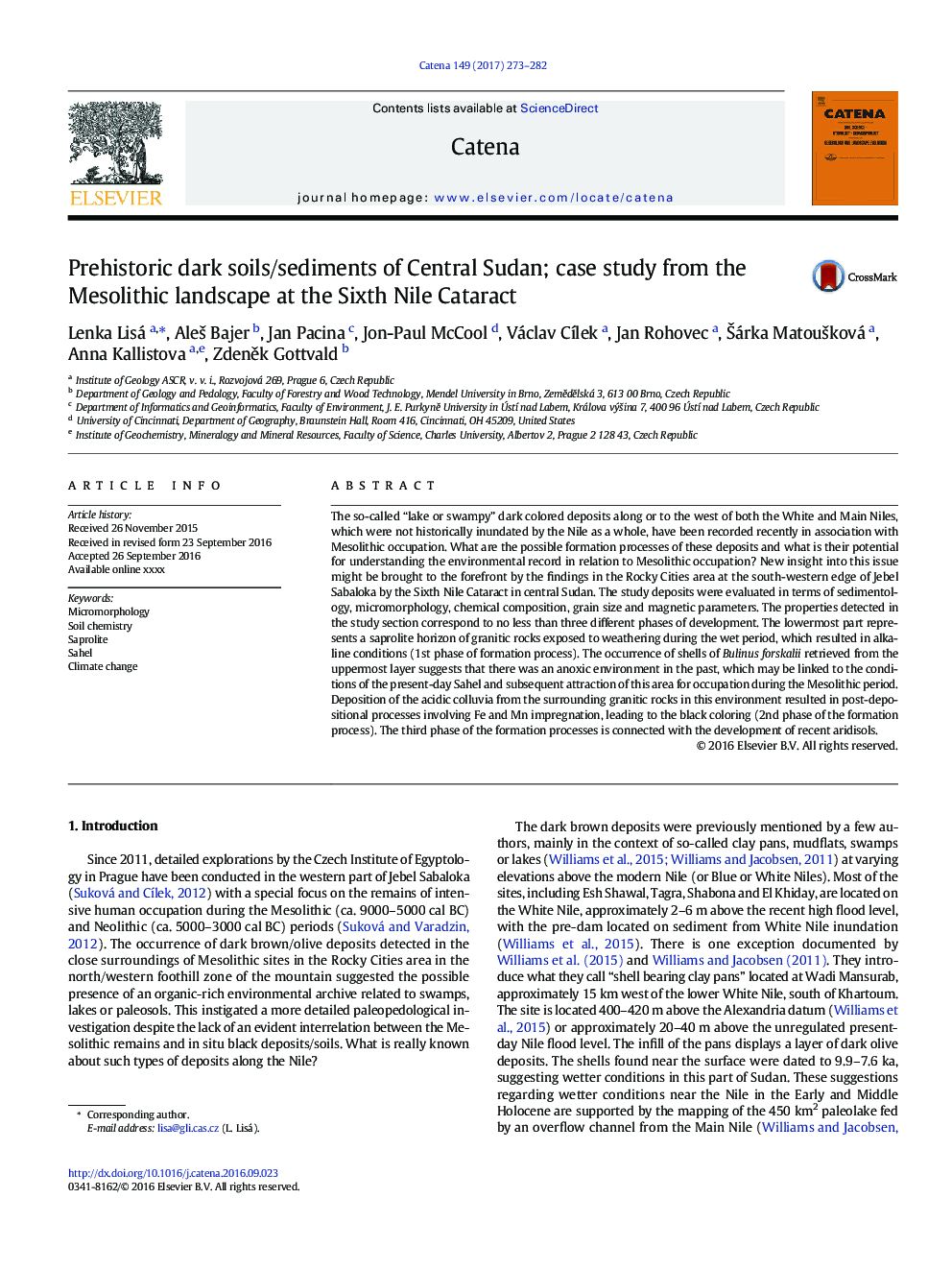| کد مقاله | کد نشریه | سال انتشار | مقاله انگلیسی | نسخه تمام متن |
|---|---|---|---|---|
| 10997834 | 1332079 | 2017 | 10 صفحه PDF | دانلود رایگان |
عنوان انگلیسی مقاله ISI
Prehistoric dark soils/sediments of Central Sudan; case study from the Mesolithic landscape at the Sixth Nile Cataract
ترجمه فارسی عنوان
خاک های خاکستری پیشقدم تاریخی / رسوبات سودان مرکزی؛ مطالعه موردی از منظر بین النهرین در کاتالیست شیلنگ نیل
دانلود مقاله + سفارش ترجمه
دانلود مقاله ISI انگلیسی
رایگان برای ایرانیان
کلمات کلیدی
میکرومورفولوژی، شیمی خاک، صبرلیست، ساحل، تغییر آب و هوا،
موضوعات مرتبط
مهندسی و علوم پایه
علوم زمین و سیارات
فرآیندهای سطح زمین
چکیده انگلیسی
The so-called “lake or swampy” dark colored deposits along or to the west of both the White and Main Niles, which were not historically inundated by the Nile as a whole, have been recorded recently in association with Mesolithic occupation. What are the possible formation processes of these deposits and what is their potential for understanding the environmental record in relation to Mesolithic occupation? New insight into this issue might be brought to the forefront by the findings in the Rocky Cities area at the south-western edge of Jebel Sabaloka by the Sixth Nile Cataract in central Sudan. The study deposits were evaluated in terms of sedimentology, micromorphology, chemical composition, grain size and magnetic parameters. The properties detected in the study section correspond to no less than three different phases of development. The lowermost part represents a saprolite horizon of granitic rocks exposed to weathering during the wet period, which resulted in alkaline conditions (1st phase of formation process). The occurrence of shells of Bulinus forskalii retrieved from the uppermost layer suggests that there was an anoxic environment in the past, which may be linked to the conditions of the present-day Sahel and subsequent attraction of this area for occupation during the Mesolithic period. Deposition of the acidic colluvia from the surrounding granitic rocks in this environment resulted in post-depositional processes involving Fe and Mn impregnation, leading to the black coloring (2nd phase of the formation process). The third phase of the formation processes is connected with the development of recent aridisols.
ناشر
Database: Elsevier - ScienceDirect (ساینس دایرکت)
Journal: CATENA - Volume 149, Part 1, February 2017, Pages 273-282
Journal: CATENA - Volume 149, Part 1, February 2017, Pages 273-282
نویسندگان
Lenka Lisá, AleÅ¡ Bajer, Jan Pacina, Jon-Paul McCool, Václav CÃlek, Jan Rohovec, Å árka MatouÅ¡ková, Anna Kallistova, ZdenÄk Gottvald,
